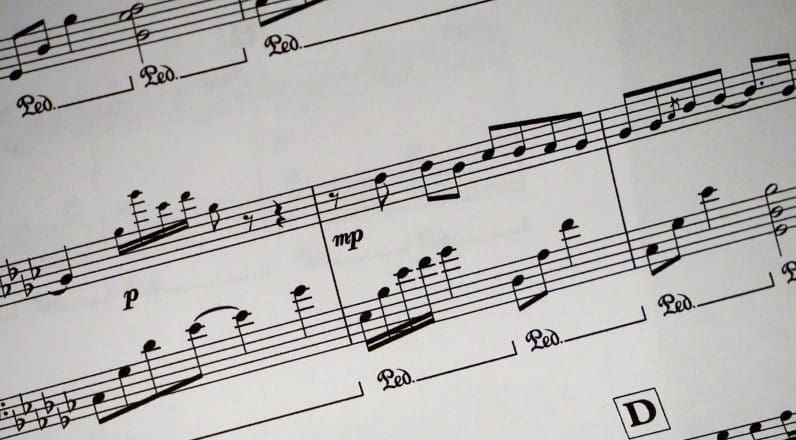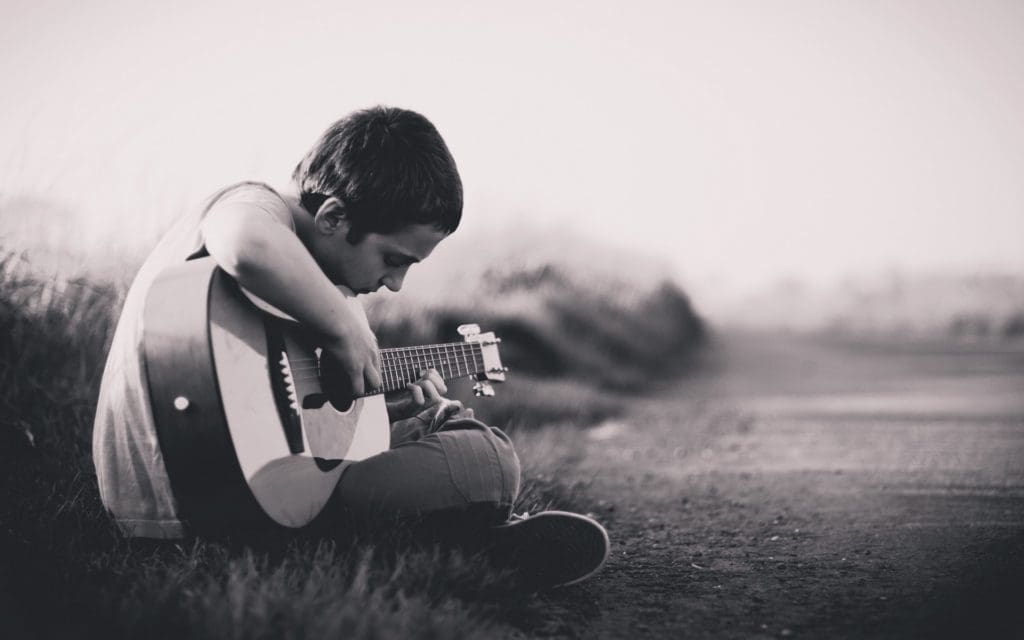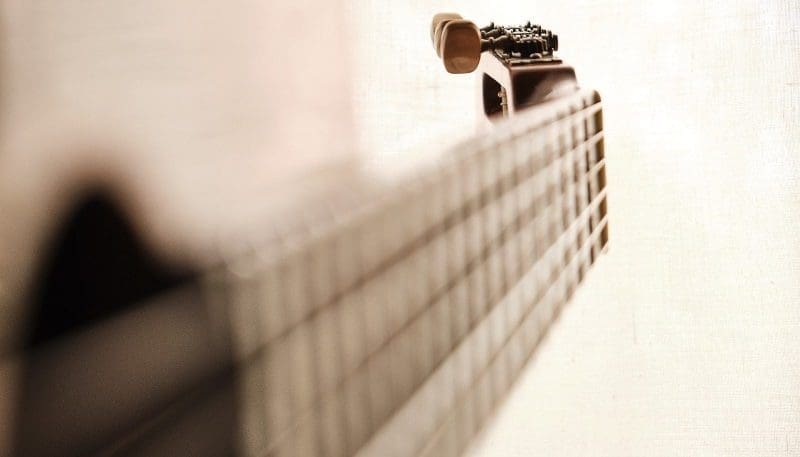Last update 5/2/2024
Our comprehensive glossary of musical terms tailored specifically for guitarists. Whether you’re a beginner or an experienced player, this guide is designed to provide you with a complete understanding of essential musical concepts and techniques relevant to the world of guitar playing. From foundational theory to advanced playing techniques, we’ve compiled an A-to-Z list as a reference source for you.
Musical terms for guitarists
A
Arpeggio: A sequence of individual notes from a chord, played one after another rather than simultaneously.
Alternate Picking: A technique where the guitarist uses a consistent up-and-down pick motion to strike the strings in a regular rhythm.
Amplifier (Amp): A device used to increase the volume and shape the tone of an electric guitar.
B
Barre Chord: A chord formed by using one finger to press down multiple strings across the fretboard.
Bend: A technique in which a guitarist pushes or pulls a string to change the pitch while maintaining the note’s original fret position.
Bridge: The part of the guitar where the strings are anchored at the body, transmitting vibrations to the guitar’s body.
C
Chord: A combination of three or more notes played simultaneously, forming a harmonic unit.
Capo: A device placed on the neck of the guitar to raise the pitch of all the strings, enabling the player to use open chord shapes in different keys.
C Major Scale: A seven-note scale consisting of the intervals: whole, whole, half, whole, whole, whole, half.
D
Dynamics: The variation in loudness and intensity of a musical performance.
Drop Tuning: Lowering the pitch of one or more strings to achieve a heavier, deeper sound.
Downstroke: Strumming or picking the strings in a downward motion.
E
Economy Picking: A technique that combines alternate picking and sweeping, designed to minimize hand movement and increase speed.
Effects Pedal: A device used to modify the sound of a guitar using effects like reverb, delay, distortion, etc.
Endpin: A part on the bottom of an acoustic guitar used to attach a strap.
F
Fret A metal strip embedded in the guitar neck, dividing the strings into different pitches.
Fingerstyle: A technique where the guitarist uses their fingers to pluck the strings instead of a pick.
Fifth: An interval spanning five diatonic scale degrees.
G
Guitar Strap: A strap attaches to the guitar’s body, allowing the player to wear it over their shoulder.
Gigbag: A padded bag used for carrying and protecting the guitar.
Guitar Pick: A small, flat object used to strike the strings and create sound.
H
Hammer-On: A technique where a note is sounded by tapping a finger onto the fretboard without picking.
Harmonic: A bell-like sound created by lightly touching the string at a specific point while simultaneously picking it.
Headstock: The top section of the guitar’s neck, where the tuning pegs are located.
I
Intonation: The accuracy of the guitar’s pitch across the entire fretboard.
Inlay: Decorative designs or materials set into the fingerboard, often used as position markers.
Improvisation: Creating music on the spot, without prior planning or sheet music.
J
Jam Session: An informal musical gathering or a band where musicians play together without a predetermined arrangement.
Jazz Chords: Complex chords that often involve extended harmonies and alterations, commonly used in jazz music.
Jazz Guitar: A style of guitar playing characterized by improvisation and the use of jazz harmony.
K
Key: The main note or chord around which a piece of music revolves.
Knob: A control on the guitar or amplifier used to adjust various parameters, such as volume or tone.
Knotting Technique: A method of securing guitar strings to the bridge or tailpiece.
L
Lick: A short, distinctive musical phrase often used in improvisation.
Legato: A smooth and connected playing style where notes are played without any distinct breaks.
Loop Pedal: A device that records and plays back a music segment, allowing the guitarist to create layered arrangements.
M
Metronome: A device that provides a steady beat, helping guitarists maintain proper timing and rhythm.
Modal Scale: A scale with distinctive tonal characteristics used to create specific moods in music.
Mute: To dampen or silence the strings with the palm of the hand or another object.
N
Natural Harmonics: Harmonics are produced by lightly touching the string over specific frets while picking the string.
Neck: The long, thin part of the guitar that contains the fretboard and the tuning pegs.
Nylon Strings: Softer strings made of nylon or nylon-like materials, commonly used on classical and flamenco guitars.
O
Octave: An interval spanning eight diatonic scale degrees, often used for harmony and doubling melodies.
Overdrive: A type of distortion that produces a warm, smooth sound, commonly used in rock and blues.
Open Chord: A chord with one or more open strings, usually played near the guitar’s nut.
P
Palm Muting: A technique where the palm of the picking hand is placed lightly on the strings near the bridge to create a muted, percussive sound.
Phaser: An effect pedal that modulates the audio signal phase and creates a swirling, sweeping sound.
Plectrum: Another term for a guitar pick.
Q
Quadraphonic: A sound system that uses four speakers to create a more immersive audio experience.
Quick Change Capo: A capo that can be easily adjusted or moved on the fretboard without being completely removed.
Quarter Note: A basic rhythmic unit, typically receiving one beat in a musical piece.
R
Riff: A short, repeated musical phrase, often serving as the foundation of a song.
Rest Stroke: A fingerpicking technique where the finger plucks a string and comes to rest on the adjacent string.
Reverb: An effect that simulates the sound reflections of a room, adding depth and spaciousness to the sound.
S
Scale: A sequence of musical notes played in ascending or descending order, forming the basis of melodies and solos.
Slide: A technique where the guitarist uses a smooth object (a metal or glass slide) to glide along the strings, creating a unique sound.
Sustain The length of time a note sounds after being struck.
T
Tremolo: A rapid back-and-forth movement of a note’s pitch, often created using a tremolo bar on an electric guitar.
Tablature (Tabs): A form of notation that shows where to place fingers on the fretboard, indicating which strings and frets to play.
Tapping: A technique where the guitarist uses their fingers to tap the frets to produce notes, often used in virtuosic playing.
U
Unison: Two or more notes played simultaneously at the same pitch.
Upstroke: Strumming or picking the strings in an upward motion.
Ukulele: A small, four-stringed instrument related to the guitar, commonly used in folk and Hawaiian music.
V
Vibrato: A technique where the pitch of a note is modulated by rapidly and subtly bending and releasing the string.
Volume Pedal: A pedal used to control the volume
In conclusion
In conclusion, understanding musical terms is an invaluable asset for guitar players. Having the ability to to communicate effectively with other musicians, comprehend music theory for the guitar is really worthwhile.
Everything from basic terminology like “tempo,” “dynamics,” and “rhythm” to more guitar-specific concepts such as “hammer-on,” “pull-off,” and “bending” are all common concepts for the guitar. It will increase your appreciation and understanding of music as a universal language.
Be sure to keep experimenting, practicing and increasing your musical vocabulary, it will prove very helpful as you progress as a guitar player.
Resources
1. Music Theory Dictionary. Method-behind-the-music.com. https://method-behind-the-music.com/theory/dictionary/. Published 2017. Accessed June 2, 2020.



